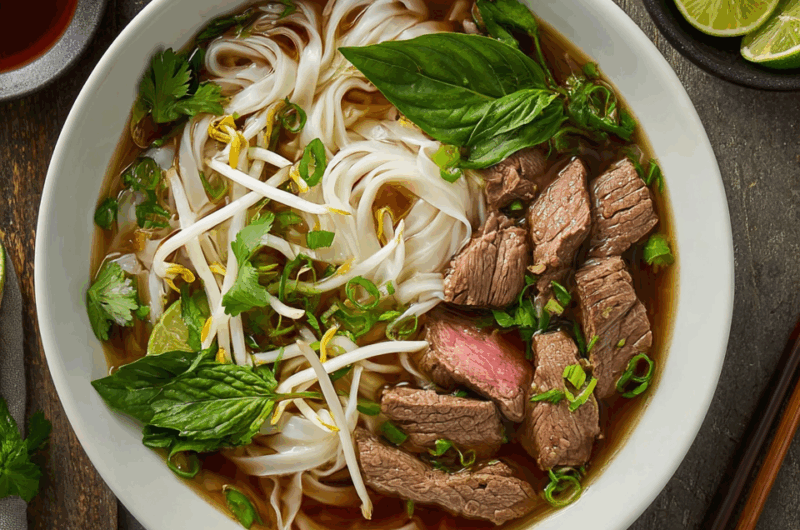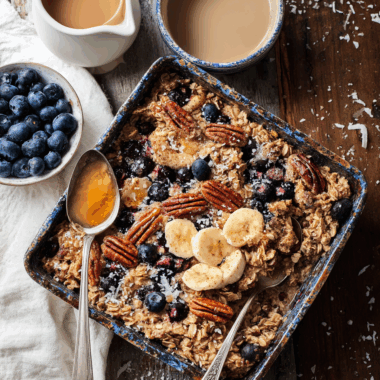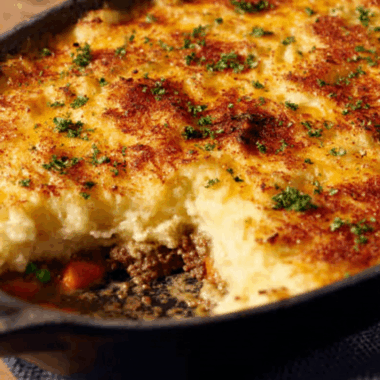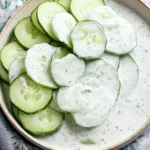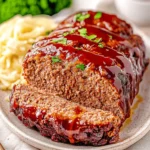The deep, rich aroma of beef bones slowly simmered with ginger, onion, and spices is unmistakable—this is authentic Vietnamese Pho, the national dish of Vietnam. Known for its comforting qualities and complex flavor profile, pho is the ultimate warm bowl of love.
This recipe delivers traditional pho flavor the way it’s served in Hanoi or Ho Chi Minh City: bone broth simmered for hours, ladled hot over chewy rice noodles and razor-thin beef slices, and topped with fresh herbs, lime, and sauces. It’s an experience in every spoonful—perfect for cozy dinners, lazy weekends, or impressing friends with your culinary skills.
Full Recipe:
-
4 pounds beef soup bones (shank and knee bones)
-
2 onions, halved
-
1 (4 inch) piece fresh ginger, split lengthwise
-
2 tablespoons salt
-
1 tablespoon white sugar
-
1 tablespoon fish sauce
-
6 quarts water
-
1 package (16 oz) dried flat rice noodles
-
1/2 pound beef sirloin, thinly sliced
-
1/4 cup chopped cilantro
-
1/2 cup chopped green onion
-
1 cup fresh bean sprouts
-
1 bunch Thai basil
-
1 lime, cut into wedges
-
Hoisin sauce (optional)
-
Sriracha sauce (optional)
-
5 whole star anise pods
Directions:
-
Preheat oven to 425°F (220°C). Place beef bones and onion on a baking sheet. Roast for 30-45 minutes, or until well browned.
-
In a large stockpot, place roasted bones, onions, ginger, star anise, salt, sugar, and fish sauce. Add water and bring to a boil, then lower heat and simmer uncovered for 6 to 8 hours. Skim foam and fat occasionally.
-
Strain broth through a fine mesh strainer, discarding solids. Return broth to pot and keep hot.
-
Soak rice noodles in cold water for 1 hour. Then boil noodles for about 1 minute or until tender, and drain.
-
Divide noodles among serving bowls. Top with raw beef slices, then ladle hot broth over beef to cook it.
-
Garnish with cilantro, green onions, bean sprouts, basil, lime wedges, hoisin, and sriracha as desired.
Prep Time: 30 minutes | Cooking Time: 8 hours | Total Time: 8 hours 30 minutes
Kcal: 450 kcal | Servings: 6 servings
Introduction to Vietnamese Pho
Pho (pronounced “fuh”) is more than just a meal—it’s a culinary icon of Vietnam, a dish that represents the soul of its people, the resilience of its culture, and the comfort of warm, nourishing food. This aromatic noodle soup is widely considered the national dish of Vietnam, recognized globally for its rich, clear broth, delicate rice noodles, and thinly sliced beef. But pho is more than the sum of its parts; it is an experience rooted in heritage, tradition, and flavor.
This article dives into the cultural history, preparation methods, and modern variations of pho while celebrating its enduring appeal both in Vietnam and across the globe.
The Origins of Pho
While the exact origins of pho remain debated, most historians agree that it emerged in northern Vietnam, particularly around Hanoi, in the early 20th century. Pho was initially a street food, sold by vendors carrying portable kitchens on shoulder poles. It quickly grew in popularity as a breakfast dish before becoming a mealtime staple across all hours of the day.
Some theories suggest pho was influenced by French colonialism, particularly the dish pot-au-feu, a French beef stew that shares similarities with pho’s broth. The word “pho” itself is believed to be a Vietnamese corruption of “feu” (fire), though this connection is still debated among food scholars.
Pho’s Evolution Across Regions
Vietnam is a long, narrow country with distinct culinary regions, and pho has evolved to reflect these differences. In Northern Vietnam, pho (known as pho bac) is all about purity—clear, simple beef broth with minimal garnishes. Southern-style pho, particularly pho sai gon, embraces bolder flavors, sweetness in the broth, and a wider array of toppings and sauces like hoisin and sriracha.
When Vietnamese immigrants spread around the world after the Vietnam War, pho traveled with them. From California to Paris to Sydney, pho has become a beloved comfort food that adapts to local tastes without losing its core identity.
Crafting the Perfect Broth
The soul of pho lies in its broth. Authentic pho broth is made by simmering beef bones (often including marrow-rich joints like shank or knuckle) for hours—sometimes up to 8 or more. The extended simmering process extracts collagen, marrow, and minerals, giving pho its unmistakable richness and body.
But bones aren’t the only secret to flavor. Aromatics like charred onions and ginger provide a smoky depth, while spices such as star anise, cinnamon, cloves, and cardamom give pho its signature fragrance. Fish sauce adds an umami backbone and saltiness that ties it all together. The final broth should be clear but deeply flavorful, warming, and complex.
Skimming impurities and excess fat during simmering is crucial for clarity. Many pho cooks roast the bones beforehand for deeper flavor and always strain the broth meticulously at the end.
Choosing the Right Noodles and Beef
Pho is traditionally served with banh pho—flat rice noodles that range from thin to wide, depending on personal preference and regional style. These noodles are usually soaked and blanched just before serving to preserve their chewiness without becoming mushy.
Beef in pho is typically raw top sirloin or eye of round, sliced paper-thin so that it cooks gently in the hot broth as it is poured over. This technique keeps the beef tender and succulent. Some variations include cooked brisket, tendon, or meatballs (pho dac biet), allowing diners to enjoy different textures and cuts.
Garnishes: Tradition Meets Customization
One of the joys of pho is customizing it to your taste. Garnishes not only add freshness but allow diners to layer flavors and textures.
Common pho accompaniments include:
-
Fresh Thai basil
-
Bean sprouts
-
Sliced jalapeños or bird’s eye chilies
-
Lime wedges
-
Cilantro and scallions
-
Hoisin sauce and sriracha
Southern Vietnamese pho is known for its abundance of herbs and condiments, while Northern pho keeps things minimal—often no more than scallions, cilantro, and a squeeze of lime.
This interplay between minimalist and maximalist approaches adds to pho’s versatility and global appeal.
Nutritional Benefits of Pho
Despite its depth of flavor, pho is surprisingly healthy. The broth is hydrating and packed with amino acids, especially when made from beef bones rich in collagen. When consumed in moderation, the bone broth can support joint health, digestion, and skin elasticity.
Rice noodles provide energy without being overly heavy, and the lean beef adds protein. Fresh herbs and vegetables contribute fiber, vitamins, and antioxidants. Pho can be made gluten-free, dairy-free, and even keto-friendly by adjusting the noodles and toppings.
Of course, sodium levels can be high depending on the use of fish sauce or store-bought broth, so home preparation allows for better control over nutritional balance.
Why Pho Is a Global Phenomenon
Pho’s international success lies in its perfect blend of comfort and sophistication. It appeals to all palates: savory, slightly sweet, herbaceous, and spiced—yet never overwhelming. It’s a meal you slurp slowly, letting each mouthful awaken your senses.
It’s also incredibly photogenic, often served in large white bowls with vibrant herbs, wisps of steam, and colorful garnishes. This has made pho a favorite among food bloggers and social media influencers alike.
Beyond its flavor, pho represents cultural connection. For many Vietnamese families, pho is a Sunday ritual, a recipe passed down through generations. For immigrants and diaspora communities, it’s a taste of home. For newcomers, it’s a delicious entry point into Southeast Asian cuisine.
Modern Twists and Creative Variations
While traditional beef pho remains king, modern interpretations are flourishing. Chefs around the world have experimented with different proteins, such as chicken (pho ga), seafood, duck, or even vegan pho made with mushroom or vegetable broth.
There are also “dry pho” options, where the broth is served on the side, or pho-inspired dishes like pho tacos, pho burgers, and even pho-flavored cocktails.
While purists may scoff at these reinventions, they reflect pho’s adaptability and global resonance. As long as the essence of slow-simmered broth and rice noodles remains intact, the possibilities are endless.
Tips for Serving and Storing Pho at Home
Pho is best enjoyed immediately after preparation, when the broth is piping hot and the ingredients are freshly added. However, you can prepare components ahead of time to simplify the process.
Store the broth and noodles separately to prevent sogginess. Broth will last 3–4 days in the refrigerator and up to 3 months in the freezer. Reheat gently to preserve flavor. Noodles can be refreshed with a quick dip in boiling water.
Toppings should always be served fresh and chopped right before mealtime for the best texture and aroma.
Conclusion: Pho as a Culinary Legacy
Authentic Vietnamese pho is more than a trend—it’s a celebration of balance, tradition, and culinary artistry. From the meticulous simmering of bone broth to the final sprigs of Thai basil, every step in making pho speaks of care and intention. Whether served on bustling Hanoi sidewalks or in a cozy home kitchen across the globe, pho continues to comfort, nourish, and inspire.
Its enduring popularity is no accident. Pho offers a rare culinary trifecta: it’s deeply satisfying, endlessly customizable, and rooted in cultural heritage. In an ever-changing food world, pho remains a timeless dish, as much about the journey as the destination. It’s a meal, a memory, and a tradition—all in one fragrant bowl.

